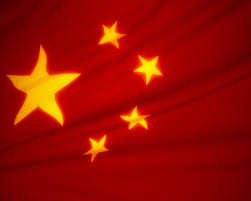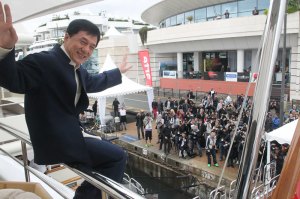This topic has probably been my favourite in the course so far. It could be because I did a group presentation on it, or it could be simply because it is such an interesting topic for someone interested in film like me. Anyway, in researching, discussing, listening and presenting, I felt I learnt a lot, and will attempt to divulge some of my secrets in this blog post!
In this blog, I’m going to look briefly at the Chinese influence on Western Films, before going on to examine individuals who have made films in both the Chinese and Western film industries, thereby contributing to the transnationalising of both.
1. Chinese influence on Western Films
Schaefer and Karn (‘Problematizing Chindia’ Global Media and Communication, vol. 6, 2010) talk about the dominance of Hollywood over the world, but also predict that Asian film Industries, particularly India and China will have an increasing influence. We’ve seen something of the Chinese influence in the content of Hollywood films, although arguably the portrayal has been rather 2-dimensional and stereotypical at times.
A recent example of the Chinese influence on a Western film is the remake of Karate Kid:
2. Individuals who have begun in the Chinese film industry but have had success in Western Film Industries also.
There’s a number of actors, screenwriters, directors, stuntmen and producers who could fit into this category, but we’re going to look at two in particular: Jackie Chan and Ang Lee.
Both grew up in the China area (Chan from Hong Kong, then owned by the British, while Lee grew up in the republic of Taiwan), and both started out in the Chinese film industry before having success in the mainstream Western industry. Jackie Chan is famous for his martial arts, and ability to make martial arts funny, in both his Chinese films such as New Fist of Fury (1976), and CZ12 (2012), and his Hollywood films such as Rumble In the Bronx (1995) and Karate Kid (2010).
In this interview he talks about some of the differences between the Chinese and Hollywood film industries:
His popularity has meant that Western viewers have watched Chinese movies, and Chinese viewers have watched Western movies that he has starred in – an example of the increasingly transnational nature of the film industry today.
Ang Lee is now a well-known and successful director in both English and Mandarin films. The films he’s produced has been across many genres and cultures, meaning that he has been able to cross cultural boundaries in order to focus on the emotions and message of the films.
His first mainstream English film was Actor Emma Thompson’s adaption of Jane Austen’s Sense and Sensibility. It was interesting that Lee was chosen to direct, given the fact that it’s a quintessentially British film in many ways. Earlier this year at the Oscars he was asked about the cultural and language barriers in directing Western films, and he said this:
“Movies are basically sight and sound – it’s overcome-able. I spoke broken English when I did Sense and Sensibility. After that I thought it could be done – I just have to work harder… You can overcome cultural barriers, but you have to be more diligent. I think sometimes disadvantages become advantages – I think the reason I come from another culture actually enriches.”

Ang Lee’s film Sense and Sensibility, which starred many British actors including Emma Thompson, Alan Rickman, Hugh Laurie, Hugh Grant and Kate Winslet.
In 2000, Lee released a film in Mandarin, which became popular in both his homeland and in the United States. It incorporated traditional Chinese legends and martial arts, made in some ways more accessible for Western Audiences. The film grossed over $213 million worldwide, was the most popular foreign language film ever to be released in the US, and received 10 Oscar nominations. Schaefer and Karan recall how “The success of America’s highest-grossing foreign language film – Ang Lee’s Crouching Tiger, Hidden Dragon… was attributed to hybridization, resulting in ‘an Eastern movie for Western audiences, and a Western movie for Eastern Audiences.”
The film was not all that popular in Hong Kong or mainland China, but the fact that it enjoyed popularity both in Taiwan and USA, and was made in Mandarian with Chinese actors suggests that it was transnational in scope.
Have a look at the US trailer here:
More recently, Lee has directed the film Life of Pi, which is an interesting film from a global perspective in that it was:
- Based on a book by a French Canadian
- Set in India, starring Indian actors
- Made by an American company
- Directed by a Taiwanese
- Filmed partly in Taiwan
Earlier this year, while receiving the Oscar for Best Director, Lee said this about the film:
“This is really an international film, I’m glad that Taiwan get to contribute this much to the film, therefore present the movie to the whole world. I just feel this movie really belongs to the whole world. “
So Ang Lee has been instrumental in breaking barriers between the Western and Chinese film industries, both in terms of those involved in the making of films, and the watching of films. Whilst Jackie Chan has helped bring Chinese culture to Western Audiences and vice versa, Ang Lee has instead transcended many different culture boundaries and in doing so has helped contribute to our transnational film industry today.

